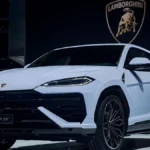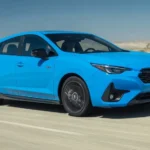The rise of electric vehicles (EVs) is leading us towards a greener future. The idea of electric cars started in the 19th century. Pioneers like Anyos Jelik, Robert Andreson, and Gustav Trouvé worked on electric cars back then.
But, gas-powered cars like Henry Ford’s Model T took over in the early 20th century. The 1960s and 1970s saw a comeback for EVs, thanks to oil crises. Companies like General Motors started working on prototypes again.
In the 21st century, electric cars made a big leap forward. The Tesla Roadster showed what electric cars could do. The Nissan Leaf became the first all-electric car for the masses.
Now, electric vehicles make up 10% of the global market. The Tesla Model Y is the top-selling car in the world. This shows a big move towards green transportation.
Key Takeaways
- The electric car concept dates back to the 19th century, but declined due to the rise of gas-powered vehicles.
- Renewed interest in EVs emerged in the 1960s and 1970s, leading to prototypes from companies like General Motors.
- The Tesla Roadster and Nissan Leaf marked a turning point for the mainstream adoption of electric vehicles.
- Electric vehicles now account for 10% of the global market share, and the Tesla Model Y is the world’s best-selling vehicle.
- The shift towards electric cars signals a move towards more sustainable transportation solutions.
The Rise of Electric Vehicles (EVs)
The story of electric cars is fascinating, filled with early dreams, challenges, and a big comeback in the 21st century. The first electric cars were made in the 19th century by innovators like Anyos Jelik and Robert Andreson. But, the rise of gas cars like the Ford Model T made electric cars less popular.
Early Beginnings and the Rebirth of EVs
In the 1960s and 1970s, people started to care more about electric cars again because of oil crises. The 1990s saw better electric cars and more people wanting them because of the environment. The 21st century was a big change, with the Tesla Roadster showing what electric cars could do. The Nissan Leaf, launched in 2010, was the first electric car for everyone, helping electric car history grow.
Turning Point: The 21st Century and Beyond
By January 2023, electric car history had reached 10% of the global market. In May of that year, the Tesla Model Y became the top-selling car in the world. As EV adoption keeps growing, the future looks bright for Tesla, Nissan Leaf, and other electric cars changing how we travel.
“The future of transportation is electric, and the rise of electric vehicles is a testament to the power of innovation and the commitment to a more sustainable future.”
Benefits of Driving an Electric Car
As more people choose electric vehicles (EVs), it’s clear they have many benefits. They help the environment and save money. EVs are changing how we see green transportation.
Reduced Emissions and Noise Pollution
Driving an EV means no tailpipe emissions. This is a big difference from gas cars. EVs make the air cleaner and are better for our health. They also make less noise, making driving quieter and less stressful for everyone.
Lower Operating and Maintenance Costs
EVs also save you money over time. They cost less to run and maintain. Charging an EV is cheaper than gas, and they need less upkeep.

“Driving an electric car reduces smog pollution and cuts greenhouse gas emissions, contributing to a cleaner environment and better health.”
EVs offer both environmental and financial perks. As technology gets better and charging spots grow, EVs will become even more appealing. They’re a smart choice for those wanting to save money and help the planet.
Charging Infrastructure: Powering the EV Revolution
The shift to green transport depends on better EV charging infrastructure. New tech is making charging faster and more efficient. This includes bidirectional, dynamic, smart, and wireless charging. These improvements aim to make charging easier for EV drivers.
High-capacity charging stations and new battery types are cutting down on charging times. They also help solve issues with key materials. As more people choose electric cars, we need to grow and improve our charging systems. This will help make electric vehicles more common.
Charging Solutions for the Future
- Level 1 home charging: A simple way for EV owners to charge at home
- Level 2 public charging: Faster than Level 1, found in public spots
- Rapid DC charging stations: Super-fast charging options
- Wireless charging pads: No cables needed for charging in garages and lots
- Solar-powered charging stations: Use the sun’s energy to charge EVs
- Smart-grid integration: Helps manage charging to use less energy
| Charging Innovation | Key Benefits |
|---|---|
| Bidirectional Charging | EVs can send power back to the grid, solving grid issues |
| Dynamic Charging | Charges EVs while they move, less need for stationary charging |
| Smart Charging | Charges when it’s cheapest and the grid isn’t too busy |
| Wireless Charging | No cables needed for a smooth charging experience |
The EV movement is growing fast. Better and more charging spots are key to a greener future.
“The future of electric vehicles is inextricably linked to the evolution of the charging infrastructure. As we continue to push the boundaries of charging technology, we’re unlocking new possibilities for a cleaner, more efficient transportation system.”
Environmental Impact: The Green Reality
The electric vehicle (EV) revolution is growing fast. It’s important to know how these cars affect the environment. EVs don’t have tailpipe CO2 emissions, which means less air pollution and greenhouse gases. They also use eco-friendly materials and are quieter, making driving nicer.
Positive Impacts of EVs
- Zero direct emissions, leading to improved air quality and reduced carbon footprint
- Efficient electric motors that convert over 77% of stored energy into power, compared to just 12-30% in conventional gas-powered vehicles
- Regenerative braking systems that convert kinetic energy into electrical energy, extending the vehicle’s range and reducing wear on the braking system
Challenges and Considerations
EVs have many benefits, but there are challenges too. The type of electricity used to charge them matters a lot. If the power comes from dirty plants, it can cancel out the good. Also, getting lithium and cobalt for batteries harms the environment.
Recycling old batteries is key for a green future. To make EVs truly green, we need to use clean energy, recycle batteries, and find better ways to get raw materials. This way, electric cars can be a big step towards a cleaner world.
“The future of transportation is electric, and the environmental impact of EVs will be a key driver in their widespread adoption.”
Innovations in Electric Vehicle Technology
The electric vehicle (EV) industry is seeing big changes. These changes are making electric cars better and more popular. Improvements in batteries and charging are key to this progress.
Battery Advancements
Batteries in EVs are getting better. They can hold more charge and last longer. New types of batteries don’t need cobalt, which is good for the environment.
The Ford F-150 Lightning can even send power back to the grid. This helps during busy times. Better battery heat management also makes charging faster and keeps batteries healthy.
Charging Solutions and Smart Grids
New charging methods are making it easier to charge EVs. These include bidirectional and wireless charging. Charging times are getting shorter, which is exciting.
Car makers are also using solar energy in making EVs. This is a big step towards using clean energy. Smart grids help EVs fit well into the energy system. They make sure charging happens when it’s best for the grid.
Improving EV technology and smart grid integration is key. It makes EVs more reliable and sustainable. Governments are helping by making rules and giving incentives for EVs.
“The synergy between EV technology and smart grid integration is critical for ensuring the reliable and sustainable integration of electric vehicles into the broader energy ecosystem.”
The EV industry is growing fast. Focus on batteries, charging, and smart grids is essential. These advancements are making electric cars more efficient and green. They’re driving the shift to sustainable transport.
The electric car Market Outlook
The future of electric vehicles (EVs) looks bright. Forecasts show a big shift from gas cars to EVs. By 2032, EVs could make up 30% of all cars worldwide.
This growth is expected to be huge in places where the economy is growing fast. Cities are getting bigger, and people want cleaner cars.
Projected Growth and Adoption Rates
The EV market has grown a lot in the last few years. In 2023, China led with 60% of new EV sales. Europe and the United States followed, making up almost 95% of global sales.
China saw a 35% jump in EV sales, with 8.1 million new cars. The U.S. saw a 40% rise, with 1.4 million EVs sold. Europe also grew, with 3.2 million new EVs.
Even with some challenges, like less subsidies in China, the EV market is looking up. BNEF predicts EV sales will hit 30 million in 2027 and 73 million by 2040.
By 2035, there could be 476 million EVs on the road, under one scenario. This number could reach 722 million by 2040, making up 45% of all cars. Another scenario sees even more EVs, with 679 million and 1.1 billion by 2035 and 2040, respectively.

The EV market’s future is very promising. New tech and better infrastructure will help EVs become more common. As we move towards a greener world, EVs will play a big part in reducing emissions and making transportation cleaner.
Sustainable Transportation: A Holistic Approach
To achieve sustainable transportation, we need a complete plan. This plan should include making cities better for public transit, walking, and living spaces. It should also aim to use fewer cars and more eco-friendly ways to travel.
Integrated Urban Planning and Public Transit
City planners and governments must invest in better public transit. This means more buses, trains, and subways. These options are cheaper and cleaner than driving alone.
By making cities easier to walk and get around by public transit, we use fewer cars. This makes our cities cleaner and fairer for everyone.
Electrification of Commercial Fleets
Electric buses, trucks, and taxis are also key to a greener city. They produce less pollution than diesel vehicles. This is a big step towards a cleaner future.
By combining good policies, better infrastructure, and new tech, we can make our transportation system more sustainable. This benefits our planet, health, and quality of life.
| Metric | Value |
|---|---|
| Electric trucks and buses GHG reduction | 44 to 79 percent |
| Number of electric vehicle models in the U.S. | 44 |
| Number of electric buses in the U.S. | 300 |
| Number of electric buses in China | 421,000 |
By focusing on sustainable transport in city planning and fleet operations, we can create a greener and fairer future.
“To remain below the 2°C temperature rise threshold, 1 in 5 cars need to be EVs by 2030 in the U.S.”
Raw Materials and Resource Management
The electric vehicle (EV) market is growing fast. This growth means more demand for key materials like lithium, cobalt, and others. By 2050, the need for these minerals could jump by 1,099% to 7,513% from 2020 levels.
This increase in demand could lead to supply chain issues. It also puts a strain on the world’s resources.
Demand for Critical Minerals
Electric vehicles need lithium, cobalt, nickel, manganese, and graphite for their batteries. This growing need for these minerals is a big worry. It calls for a smart plan to ensure we have enough.
Circular Economy and Recycling Initiatives
To tackle the rising demand for raw materials, we need a circular economy. This means using and recycling EV batteries more. Standardizing recycling and finding new uses for batteries can cut waste and save resources.
Investing in new technologies and working together is essential. It will help keep the EV market growing without running out of materials.
“Circular economy strategies could halve resource demand or maintain it at 2015 levels.”
By adopting a circular economy and recycling, the EV industry can use resources more wisely. This helps create a greener future.

Policy and Incentives for EV Adoption
Governments around the world have been key in boosting electric vehicle (EV) use. They’ve set up policies and incentives to help. These efforts have made EVs more appealing and accessible to people.
In India, the National Electric Mobility Mission Plan aimed for 6-7 million eco-friendly vehicles by 2020. It offered tax breaks and lower fees for EVs. China also has big plans, with 40% of global EV users in 2017 thanks to its programs.
Other strategies like congestion pricing and tax breaks are being tried. They aim to make sustainable transport choices easier. These efforts help build a strong charging network and improve EV technology.
The U.S. Inflation Reduction Act has made a big push for EVs. It includes money for making EVs, building charging stations, and helping buyers. The Clean Vehicle Tax Credit can give up to $7,500 for buying certain EVs.
Working together, governments, companies, and researchers will drive EV progress. Their efforts will shape a greener future for transport.
- More than 1 million electric vehicles (EVs) were sold in the U.S. in 2023 alone.
- Investments in manufacturing zero-emission vehicles have increased by more than 100%.
- EV sales have tripled under President Biden, thanks to high gas prices, environmental awareness, and federal support.
“The Clean Vehicle Tax Credit offers a credit of up to $7,500 toward the purchase of some EVs, and recent updates allow buyers to claim cash at the point of sale.”
Alternative Fuel Technologies: Biofuels, Hydrogen, and Thermoelectric Cars
Electric vehicles are leading the way in sustainable transport, but they’re not alone. Other techs like biofuels, hydrogen cars, and thermoelectric cars are also in the mix. They aim to cut down our use of fossil fuels.
Biofuels come from plants like sugarcane and corn. They’re a cleaner fuel for old cars. With over 27 million flex-fuel vehicles in the US, biofuels are making a big difference.
Hydrogen-powered cars use engines that don’t emit CO2. But, we need more places to refuel them. Yet, over 70,200 hydrogen cars exist worldwide, showing their promise.
Thermoelectric cars turn engine heat into electricity. This tech could make cars up to 5% more efficient. It’s a cool way to use waste heat.
The future of cars is full of choices, each with its own pluses and minuses. As EVs grow, these alternative fuel technologies might help too. They give people more ways to travel green.
| Alternative Fuel Technology | Advantages | Challenges |
|---|---|---|
| Biofuels |
|
|
| Hydrogen Cars |
|
|
| Thermoelectric Cars |
|
|
The car world is changing fast, and alternative fuel technologies are key. Biofuels, hydrogen cars, and thermoelectric cars are all part of the shift. They offer new ways to travel green, alongside electric cars.
Conclusion
The growth of electric vehicles is leading us towards a greener future. Starting in the 19th century, electric cars have come a long way. Now, they are changing the car world, making it cleaner and more efficient.
Electric cars offer many benefits. They cut down on emissions, save money, and are quieter. As technology gets better, electric cars will become even more popular. Experts predict they will make up a big part of car sales soon.
Even though there are hurdles, like not enough charging spots and high initial costs, electric cars are the future. Governments, companies, and people are all helping. Together, they’re making transportation cleaner and better for our planet and communities.








1 thought on “Electric Cars: The Future of Sustainable Driving”